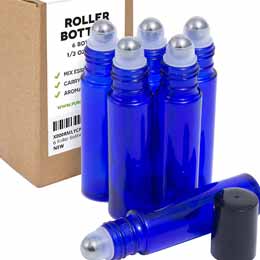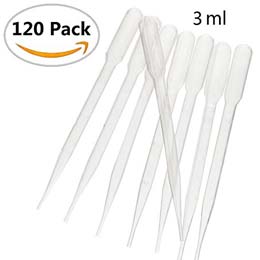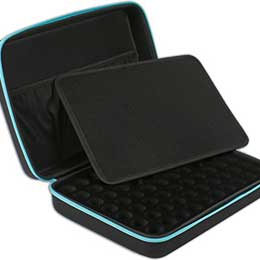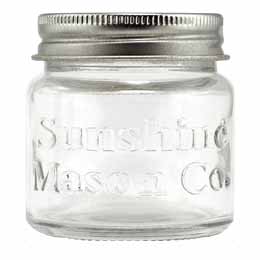About Essential Oils
When I discovered essential oils, I had no idea how easy they actually are to use and add to our everyday life.
For thousands of years essential oils have been used for the body and mind. Essential oils are extracted from many parts of the plant: flowers, stems, roots, bark, etc. and each one has their own beneficial properties.
For instance, I was going through a little bit of an emotional rough patch and knew I had to change a few things. The first thing I knew I wanted to do was use Lavender. Lavender essential oil has a sweet, floral aroma and just like the lavender plants my grandparents have always had, I love the smell.
Lavender essential oil is one of the most versatile oils; it can help eliminate depression, ease emotional stress, nervous tension, enhance blood circulation, help induce sleep, lavender is calming, relaxing and balancing, and among other things lavender can help with anxiety issues, many of these I was feeling and knew I had to try it.
So I mixed together fractionated coconut oil and lavender and put this on the bottom of my feet to help calm me and for my husband to massage my shoulder and neck to help release the tension I was feeling.
I have also dabbed just a drop of lavender essential oil to each temple area to help with headaches.
Essential oils are a great way for you to start being in control of the products you use around the house to clean. Most oils have antibacterial, antiviral and anti-fungal properties, oils like lemon, peppermint, tea tree, lavender, and grapefruit are great additions to have in your arsenal of essential oils for creating your own cleaning preparations.
If you're looking for a better way to help improve the quality of your life and the kind of products you're using in the home, essential oils are actually quite affordable considering only small amounts are needed per recipe and they don’t go rancid if stored properly and will last a long time. There are literally hundreds of uses and they can be blended together to create your own unique scents.
Buying Your Essential Oils
Do your research. If you're thinking about getting started using essential oils be sure to educate yourself and ask questions.
Essential oils are greaseless, some essential oils that are of a lesser quality will leave a greasy, kind of sticky residue behind because they may have vegetables oils or they could contain chemical solvents.
Buy your oils from a company with quality for reputation. You may pay more for your essential oils but for purity and quality – it’s worth it and when stored right – some essential oils can last for years.
Storing Essential Oils
First, the essential oils you purchase should come in a dark brown or blue bottle. When you are finished using your essential oils, be sure to close the lid properly. Also, when it comes time to make your own essential oils blends, purchase dark bottles, they come in large and small sizes depending on your needs.
As I mentioned above, essential oils will evaporate if left open. Be sure you close the lid properly when you are finished with them. You want them to last as they should.
Essential oils should be stored in a cool, dry, and dark place. Nothing too cold though. Maybe a place would be on the shelf of an inside closet where the temperature is pretty even all year long. With proper storage a bottle of essential oil can keep for one to quite a few years and longer.
Even though you store your oils carefully, the essential oils in the citrus family will most likely not last as long as other essential oils, the therapeutic properties will decrease over time as the limonene content is prone to oxidation.
Performing a Patch Test
If you are new to essential oils or if you're not sure how a blend or essential oil may react on your skin, it is recommended you do a patch test prior to use.
To perform a patch test apply 1-2 drops on a patch of skin such as the forearm. Keep an eye on the area where you have applied the essential oil over the next 1 to 2 hours for any noticeable reaction; this will usually occur within the first 5 to 10 minutes. If you experience any irritation or develop a rash, add a product such as Young Living V6 oil or olive oil to the area as often as needed.
Using Essential Oils Neat
There are a few essential oils that can be applied to the skin neat. Neat meaning you can apply them to your skin without diluting them. Before you do this, err on the side of caution and do a patch test. Lavender is a favorite to many and this is one oil that can be used neat in small amounts. Read the labels for appropriate use.
Hot Essential Oils
What is a hot oil? Hot oils are essential oils that, when applied to the skin, can cause a hot or burning sensation. With these types of oils, it is recommended to perform a patch test prior to using the oil for the first time. Examples of hot oils include Cinnamon, Clove, Lemongrass, Peppermint, Oregano, Thyme, Exodus II, and Thieves.
Safety Precautions
- If an essential oil does cause discomfort or irritation, stop using the oil, do not flush with water as this can increase any discomfort you may have.
- Be careful where you put your hands after using essential oils. It can sometimes be easy to forget and you might rub your eyes.
- If you are new to essential oils, you can start with a small number of drops and slowly work your way up to the recommended amount.
Using Carrier Oils to Dilute Essential Oils
Note: Using a carrier oil will not reduce the effects of the essential oil you're using but it will ensure the oils your applying are not irritating or overpowering. A carrier oil will also help with the amount of coverage when applying to a large area and help the oil you're using absorb into the skin.
There are quite a few ways in which you can dilute essential oils. One way is through the use of carrier oils. Carrier oils are made from nuts, seeds, vegetables, and fruits. Carrier oils are full of essential fatty acids.
For small blends, one fluid ounce carrier oil (about 6 teaspoons), you can generally add 10 to 12 drops of essential oils, which can be cut in half if you’re only making a very small blend. This may vary depending on the oils you’re using as one drop of one essential oil may not be equal to another one, so it’s important to learn about the essential oil you will be using.
Some carrier oils you might use in the home or for skincare, hair care, and massage are listed below, these are some of the more popular, and do your research as there are quite a few other carrier oils. Most carrier oils when stored properly can have a shelf life of ten months to one year. Grapeseed oil with typically last six months.
Carrier Oils That can be Used with Essential Oils
- Sweet Almond Oil – light nutty scent, moisturizing, anti-inflammatory, nourishing for dry skin, and slightly oily until absorbed.
- Apricot Oil – light scent, softens skin, moisturizing, softens/soothes skin, anti-inflammatory, nourishing for dry and mature skin, good for sensitive skin, slightly oily until absorbed.
- Coconut Oil – light coconut scent, moisturizing, softens/soothes skin, and slightly oily until absorbed.
- Evening Primrose Oil – light sweet scent, healing and good for skin conditions, anti-inflammatory, and slightly oily until absorbed.
- Grapeseed Oil – light scent, good for oily or sensitive skin, nourishing for mature skin, and non-greasy.
- Hazelnut Oil – light nutty scent, moisturizing, soothing, healing, hydrating, and slightly oily until absorbed.
- Avocado Oil – light nutty, slightly strong scent, moisturizing, nourishing for dry and mature skin, absorbs nicely.
- Extra Virgin Olive Oil – light olive scent, soothing, penetrating, anti-inflammatory, and slightly oily until absorbed.
- Rosehip Oil – light earthy scent, good for skin conditions, good for mature skin, healing, and slightly oily until absorbed.
- Safflower Oil – light scent, moisturizing and conditioning, nourishing, and slightly oily until absorbed.
- Tamanu Oil – heavier scent, soothes/softens skin, renewing, anti-inflammatory, healing dry and damaged skin, anti-bacterial, pain relieving, good for mature skin, and absorbs well.
- Jojoba Oil – very light nutty scent, nourishing, anti-inflammatory, skin conditioner, absorbs well.
Carrier oils should be stored in a cool dry place and can be kept on the same shelf as the essential oils your storing.
Using Butters in Your Homemade Essential Oil Recipes
Butters are not the same as carrier oils; butters are solid and can be just as beneficial for use in some of the recipes you make like lotions, salves, soaps, etc.
- Cocoa Butter – light chocolate scent, moisturizing, hydrating, softens skin, dry skin, and good for mature skin.
- Shea Butter – light nutty scent, moisturizing, hydrating, softens skin, healing, conditions damaged skin, and good for mature skin.
- Mango Butter - no scent, moisturizing, nourishing to skin, softens skin, healing, packed with antioxidants, hydrating.
Discovering essential oils and all the things you can do with them is fun. Do your research, read the labels, some essential oils should not be used while pregnant or nursing, some should not be used on children. Talk to a professional if you have any questions or concerns.
These are just a few of the many great uses and natural benefits you can experience when incorporating essential oils into your home environment.
IMPORTANT DISCLAIMER INFORMATION: None of the essential oil topics presented to you on Earth to Jamie have been evaluated or approved by the FDA. The recipes and opinions presented to you should not replace personal judgment nor medical treatment when indicated, nor are they intended to diagnose, treat, cure, or prevent any disease. Always talk to your physician about the use of alternative methods or any other complimentary treatment. Reading content on this website indicates your understanding and agreement to our disclaimer statement. See Terms of Use under About Us for more information.
Performing a Patch Test and a Few Safety Tips.
If you are new or not sure how a blend or essential oil may react on your skin, it is always recommended to do a patch test prior to use. To do this, mix 2 drops essential oil to about 1/2 teaspoon carrier oil then apply to a patch of skin such as the forearm. Observe that area over the next 1 to 2 hours for any noticeable reaction; this will usually occur within 5-10 minutes. If you experience any irritation or discomfort either stop using or adjust the amount of essential oils you've used.
If you have not used a carrier oil before, you can also perform a patch test to the inner arm area.
Prior to using essential oils, always check the label for appropriate usage and do not apply essential oil to sensitive areas like the eyes, ears, and mucous membranes. If you have a medical condition and/or you are taking medications, consult your physician prior to use.
More information about essential oils can be found here
Check out the Health & Beauty section for Homemade Beauty Recipes


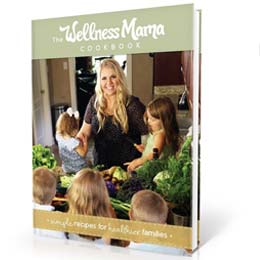

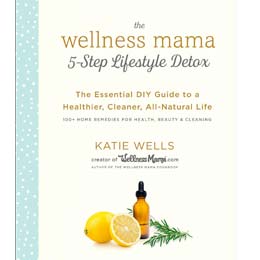 Wellness Mama 5 Step Lifestyle Detox
Wellness Mama 5 Step Lifestyle Detox